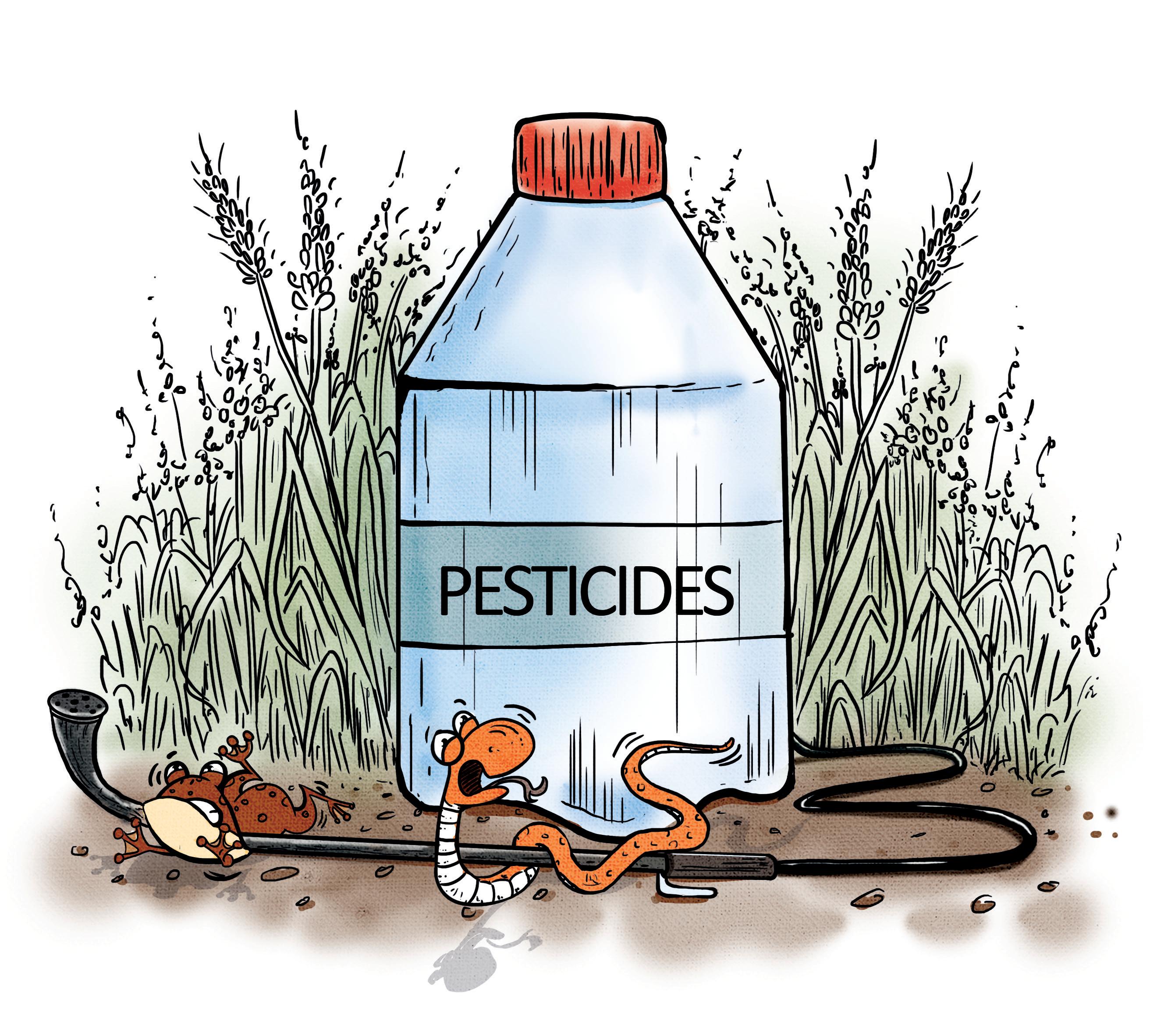Prøve GULL - Gratis
Killed in cold blood
Down To Earth
|January 01, 2023
Surveys quantify the impact of crop intensification on frogs and reptiles; say loss of species and farm productivity inevitable

THE DEMAND for land for food production always results in an uncomfortable trade-off between agricultural expansion and species conservation. One can see an example of this tradeoff in paddy fields, whose unique combination of wet and drylands provide ideal habitats for amphibians and reptiles. These cold-blooded animals, together referred to as herpetofauna, provide immense ecological services. Frogs and toads, for instance, act as biological control agents by feeding on crop pests. Several salamanders and tadpoles of frogs help in controlling mosquito and mosquito-borne diseases by feeding on the larvae. They also help improve soil quality and aeration, aid in dispersal of seeds and in pollination-there are almost 40 species of lizards including skinks and geckos that are efficient pollinators. However, the diversity and abundance of these herpetofauna are rapidly declining with increased use of pesticides, fertilisers, land conversion, changes in cropping systems and the reduced proportion of natural vegetation. According to the International Union for Conservation of Nature (IUCN), 1,532 species of Anurans (frogs) and 825 species of reptiles in the world are critically endangered, endangered and vulnerable due to agriculture and its management practices. They appear to particularly threatened in India which has a high amphibian diversity-most of them are endemic to the region-and, as per the UN Food and Agriculture Organization, had the largest cropland area over the last decade, followed by the US and China.
Denne historien er fra January 01, 2023-utgaven av Down To Earth.
Abonner på Magzter GOLD for å få tilgang til tusenvis av kuraterte premiumhistorier og over 9000 magasiner og aviser.
Allerede abonnent? Logg på
FLERE HISTORIER FRA Down To Earth

Down To Earth
COP OF TALK
The UN's 30th climate summit, COP30 in Belém, was billed as the COP of truth and implementation.It was an opportunity for the world to move beyond diagnosis to delivery. Instead it revealed a system struggling to prove its relevance.
14 mins
December 01, 2025
Down To Earth
1,500 days, and an alarm for new climate
SEASONS ARE the compass that guide humans to survive and thrive as a society. What happens if seasons lose their distinct character and predictable rhythm? This is no longer a theoretical question. The Earth is entering a new climate regime, its atmosphere now saturated with greenhouse gases at levels without precedent in human history. And the earliest sign of this shift is the near-dissolution of familiar seasons; all merging and dissipating like the pupa inside the chrysalis, but, not to give birth to that mesmerising butterfly. This metamorphosis is manifest in the blizzard of weather events, extreme in severity and unseasonal by nature and geography.
2 mins
December 01, 2025

Down To Earth
Rights in transit
A recent dispute over transport and trade of kendu leaves in Odisha highlights differing interpretations of forest rights laws in the state
6 mins
December 01, 2025
Down To Earth
Roots of peace
Kerala's forest department plants fruit and fodder trees to ease human-wildlife tensions
2 mins
December 01, 2025

Down To Earth
Flattened frontiers
Efforts to reclaim degraded land from Chambal ravines expose both people and biodiversity to ecological risks from erosion and flooding
5 mins
December 01, 2025

Down To Earth
INDIA'S DRY RUN
India is poised to be a global hub of data centres—back-end facilities that house servers and hardware needed to run online activities.
21 mins
December 01, 2025

Down To Earth
Bangla generic drugs to the rescue
A buyer's club for generic cystic fibrosis drugs sourced from Bangladesh highlights the country's laudable pharma development
4 mins
December 01, 2025

Down To Earth
Direct approach
A new direct cash transfer scheme as well as decades of women-centric programmes yield an electoral windfall for the ruling alliance in Bihar
5 mins
December 01, 2025

Down To Earth
HIDDEN RESOURCE
Punjab's 1.4 million abandoned borewells offer a chance to mitigate flood damage and replenish depleting groundwater
4 mins
December 01, 2025
Down To Earth
Corporate bias
INDIA'S DRAFT Seeds Bill, 2025, introduced by the Centre in mid-November, proposes a few key changes.
1 min
December 01, 2025
Translate
Change font size
